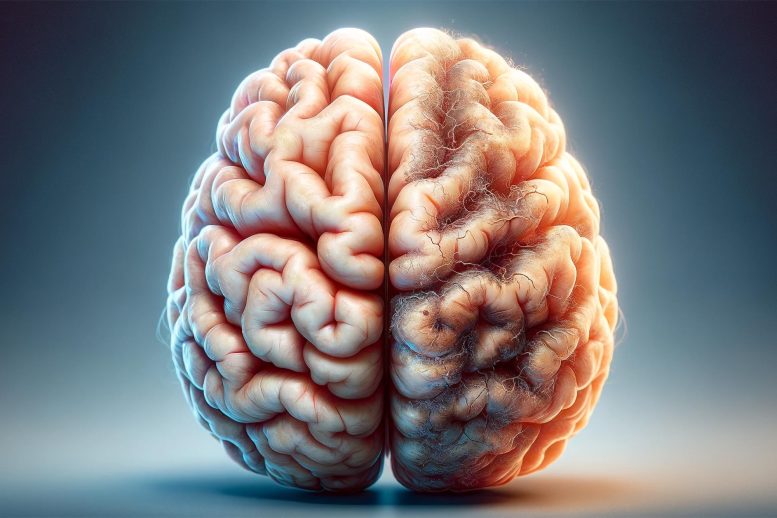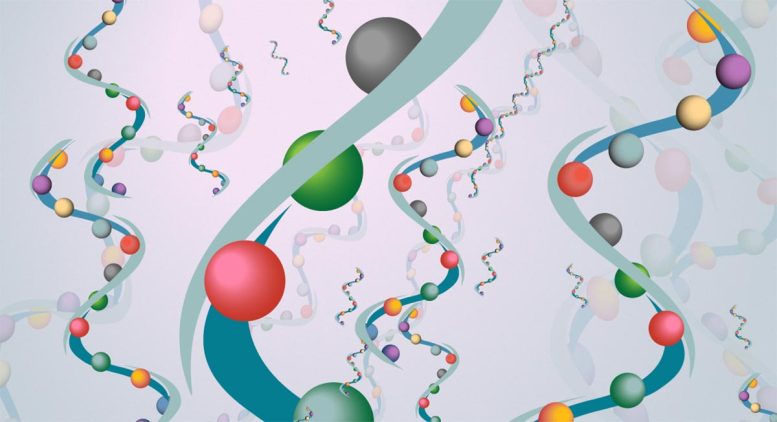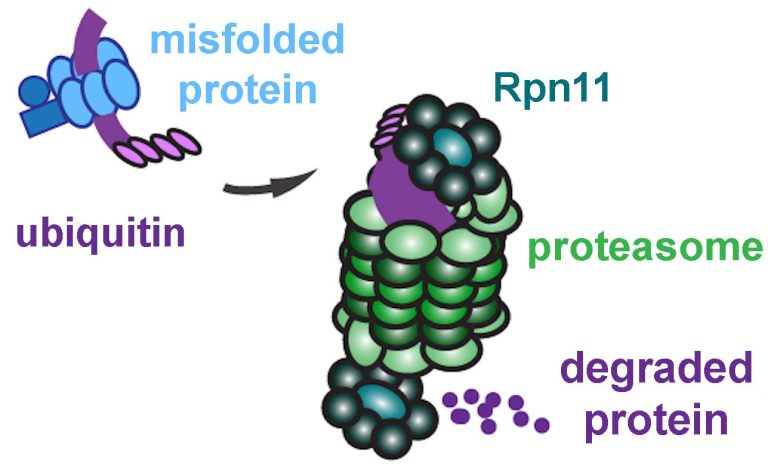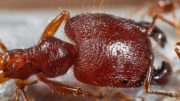
Scientists identified a link between the ion transport protein ZIP7 and the cell’s protein degradation system, the proteasome. This discovery provides a promising avenue for treating diseases caused by protein misfolding, such as Alzheimer’s and Parkinson’s.
Researchers have identified a gene therapy target that could potentially slow the development and progression of degenerative diseases.
Proteins serve as building blocks, receptors, processors, couriers, and catalysts in organisms. A protein’s structure is critical to its function. Misfolded proteins are unable to carry out their tasks and can also accumulate, leading to a variety of incurable degenerate diseases such as Alzheimer’s, Parkinson’s, and retinitis pigmentosa.
In a new paper published by Developmental Cell, researchers from the University of California, Santa Barbara reveal a new connection between the ion transport protein ZIP7 and the cell’s proteasome, which degrades misfolded proteins. This link offers a promising target for treating a variety of degenerative diseases caused by protein misfolding.

This is a story about proteins, how they malfunction, and what cells do to prevent that. Credit: Matt Perko, UC Santa Barbara
ZIP7 and Cellular Mobility
For 35 years, Montell’s lab has studied the movement of cells in fruit fly ovaries. “By studying basic cell biology in fruit fly ovaries, we stumbled upon a way to prevent neurodegeneration, and we think this has potential applications in the treatment of some human diseases,” said senior author Denise Montell, Duggan Professor and Distinguished Professor in the Department of Molecular, Cellular, and Developmental Biology. “Cell movement underlies embryonic development, drives wound healing and contributes to tumor metastasis,” she explained. “So it’s a really fundamental cell behavior that we care to understand deeply.”
In previous work, Monell’s team discovered a mutation in a gene called ZIP7, which encodes a protein of the same name, that impaired cell mobility.
The ZIP7 protein ferries zinc ions within a cell. These ions are exceedingly rare within the cytoplasm but abundant in proteins where they often form part of the architecture and catalyze chemical reactions. “ZIP7 is conserved in evolution from plants to yeast to flies to humans,” Montell said. “So it’s doing something really fundamental, because it’s been around for a really long time.”

Proteasomes grind up misfolded proteins tagged for recycling, but the enzyme Rpn11 must first remove that tag so the protein can fit. Credit: Xiaoran Guo and Morgan Mutch et al.
ZIP7 is also the only zinc transporter found in the endoplasmic reticulum, a membranous structure where a cell makes proteins destined for the outer membrane of the cell or for secretion out of the cell. About a third of our proteins are made here.
If ZIP7 is our protagonist, then misfolded proteins and their disposal are the theme of the study. For proteins, function follows form. It’s not enough to have the right ingredients, a protein must fold correctly to function properly. Misfolded proteins are responsible for a host of diseases and disorders.
But proteins will sometimes misfold even in a healthy cell. Fortunately, cells have a quality control system to deal with this eventuality. If the error is small, the cell can try folding it again. Otherwise, it will tag the misfolded molecule with a small protein called ubiquitin and send it out of the endoplasmic reticulum (ER) for recycling.
Waiting in the cytoplasm are structures called proteasomes, the “garbage disposals” of the cell. “It literally chews up the protein into little pieces that can then be recycled,” Montell said.
“But if the garbage disposal gets overwhelmed — somebody puts too many potato peels in there — then the cell experiences ER stress.” This triggers a response that slows down protein synthesis (pauses our potato prep) and produces more proteasomes so that the system can clear the backlog of waste. If all this fails, the cell undergoes programmed death.
Study Details and Findings
Co-lead author Xiaoran Guo, Montell’s former Ph.D. student, saw that loss of ZIP7 caused ER stress in the fruit fly’s ovary. So she set out to determine if this stress was the reason the cells lost their mobility. Indeed, inducing ER stress with a different misfolded protein also impaired cell migration.
When Guo over-expressed ZIP7 in these cells, the backlog of misfolded proteins disappeared, the ER stress vanished, and the cells regained their mobility. “I was so surprised that I had to question myself if I had done everything correctly,” Guo said. “If this was real, just ZIP7 alone must be very potent in resolving ER stress.”
What’s more, the misfolded protein she used, called rhodopsin, contains no zinc in its structure. This led Guo to suspect that ZIP7 must be involved somewhere in the degradation pathway. Co-lead author, and fellow doctoral student, Morgan Mutch used a drug to block the proteasome from degrading misfolded rhodopsin and observed that this negated the beneficial effect of ZIP7. She concluded that ZIP7 must be acting somewhere before the proteasome munches up the misfolded protein.
The authors created four modified ZIP7 genes: two mutations disrupted the protein’s ability to carry zinc, while the other two left this unchanged. They discovered that zinc transport was critical in reducing ER stress.
At this point, a new character enters our story: the enzyme Rpn11, which forms part of the proteasome. Much like trying to stuff a large head of broccoli down the disposal, misfolded proteins with ubiquitin tags don’t fit into the proteasome. Rpn11 snips off these tags, enabling the misfolded protein to slip into the proteasome core for disassembly. Zinc is essential for Rpn11 to catalyze the removal of ubiquitin.
“I was very surprised, and then excited, when I saw that increasing ZIP7 expression almost completely prevented the buildup of those ubiquitin-tagged proteins,” Mutch said. “We were expecting the opposite result.”
Mutch determined that ZIP7 was critical in supplying zinc to Rpn11, enabling it to trim the tags that label defective proteins so that they fit into the structure that actually breaks them down. Blocking the Rpn11 enzyme confirmed this hypothesis.
“That feeling when you discover something new, something no one has figured out before, is the best feeling for a scientist,” Mutch added.
Therapeutic Implications
The results suggest that overexpressing ZIP7 could form the basis for treating a variety of diseases. For instance, misfolded rhodopsin causes retinitis pigmentosa, a congenital blinding disease that is currently untreatable. Scientists already have a strain of fruit flies with the mutation that causes a similar disease, so the team overexpressed the ZIP7 gene in these flies to see what would happen.
“We found that it prevents retinal degeneration and blindness,” Montell said. Every single one of the flies with mutant rhodopsin usually develops retinitis pigmentosa, but a full 65% of those with overactive ZIP7 formed eyes that respond normally to light.
Montell’s lab is now collaborating with Professor Dennis Clegg, also at UC Santa Barbara, to further investigate the effect of ZIP7 in human retinal organoids, tissue cultures that bear a mutation that causes retinitis pigmentosa. This project was originally funded by the National Institute for General Medical Sciences. For the next three years, it will be supported by a $900,000 grant from the Foundation Fighting Blindness so Montell, Clegg, and their colleagues can test the hypothesis that ZIP7 gene therapy will prevent blindness in retinitis pigmentosa patients.
What’s more, proteasome capacity declines as we get older, contributing to many classic signs of aging and increasing the probability of age-related degenerative diseases. Therapies targeting ZIP7 could potentially slow the development or progression of these ailments, as well. They’ve already yielded promising results extending fruit fly lifespan.
“This is a poster child for fundamental, curiosity-driven research,” Montell said. “You’re just studying something because it’s cool, and you follow the data and end up discovering something you never set out to study, possibly even a cure for multiple diseases.”
Reference: “The Zn2+ transporter ZIP7 enhances endoplasmic-reticulum-associated protein degradation and prevents neurodegeneration in Drosophila” by Xiaoran Guo, Morgan Mutch, Alba Yurani Torres, Maddalena Nano, Nishi Rauth, Jacob Harwood, Drew McDonald, Zijing Chen, Craig Montell, Wei Dai and Denise J. Montell, 25 April 2024, Developmental Cell.
DOI: 10.1016/j.devcel.2024.04.003









My spouse was diagnosed with Parkinson’s disease. His symptoms included excruciating calf pain, muscular aches, tremors, slurred speech, frequent falls, loss of balance, and trouble standing up from a seated posture. After six months on Senemet, Siferol was given to him in place of the Senemet. It was also at this period that he was diagnosed with dementia. He began seeing hallucinations and became detached from reality. With the doctor’s approval, we stopped giving him Siferol and chose to try the Ability Health Center PD-5 program, which we had previously investigated. After three months of therapy, he has made significant progress. The illness has been completely contained. There are no symptoms of persistent twitching, weakness, tremors, hallucinations, or muscle soreness. The PD-5 Protocol was obtained from abilityhealthcentre. com. Though you still need to determine what works best for you, I thought I would share my husband’s story in case it could be helpful. Greetings and prayers